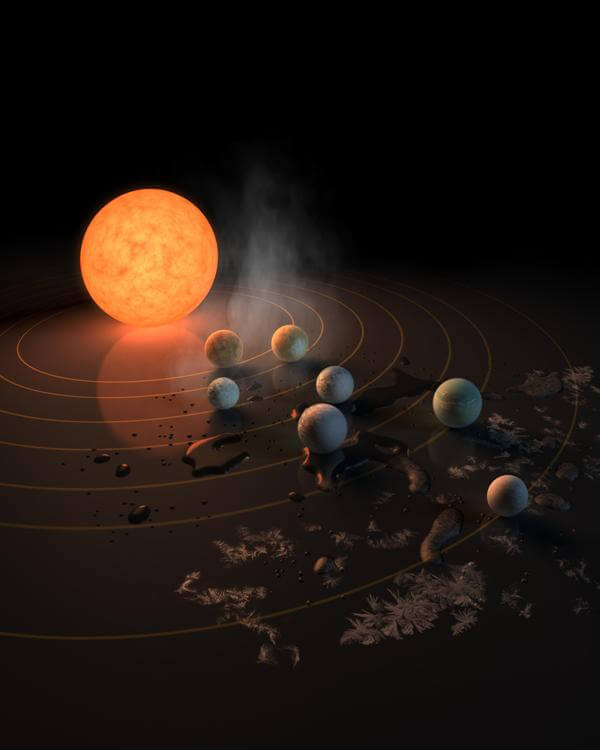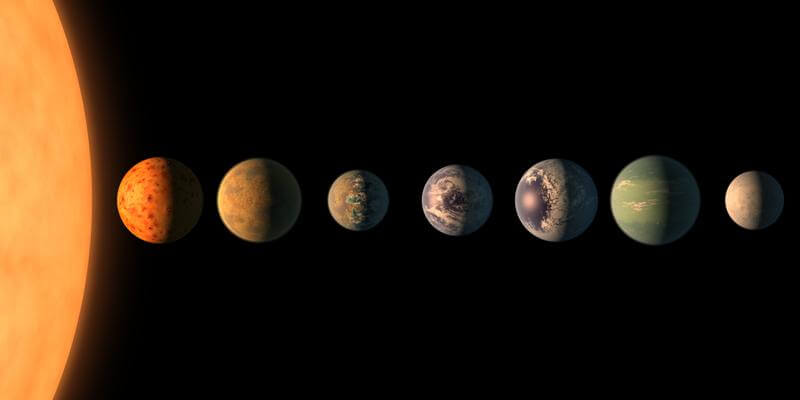The biggest question that we as human race always had in our mind is, “are we alone in this universe?”
An announcement came last week that NASA Hubble telescope discovered seven earth like planets that are orbiting the dwarf star called “TRAPPIST-1“.

Credits: NASA/JPL-Caltech
Transiting Planets and Planetesimals Small Telescope (TRAPPIST) was discovered in May 2016 and that time, it was known that there were three planets around the star. TRAPPIST is just 40 light years ways.
However, a treasure of planetary system has been discovered which can have answer to our questions.
Surprisingly, three of these planets are firmly located in the habitable zone and it sets a record for discovering of greatest number habitable planets around a star apart from our solar system.

Why is this discovery important? Because six of these discovered earth like planets are capable of holding liquid water. And as well all know,for life to evolve, a planet needs to have the right environment and conditions for humans to survive.

“This discovery could be a significant piece in the puzzle of finding habitable environments, places that are conducive to life,” said Thomas Zurbuchen, Associate Administrator of the Agency’s Science Mission Directorate in Washington.
Seth Shostak, senior astronomer for the SETI Institute noted: “the SETI Institute used its Allen Telescope Array last year [2016] to observe the environs of TRAPPIST-1, scanning through 10 billion radio channels in search of signals. No transmissions were detected, although new observations are in the offing.”
We believe that it is one step closer to getting the answers of life.
Here is the this 360-degree panorama depicts the surface of a newly detected planet, TRAPPIST 1-d,. Try playing with mouse and explore.
Story Source: Nasa
Information: Wikipedia


